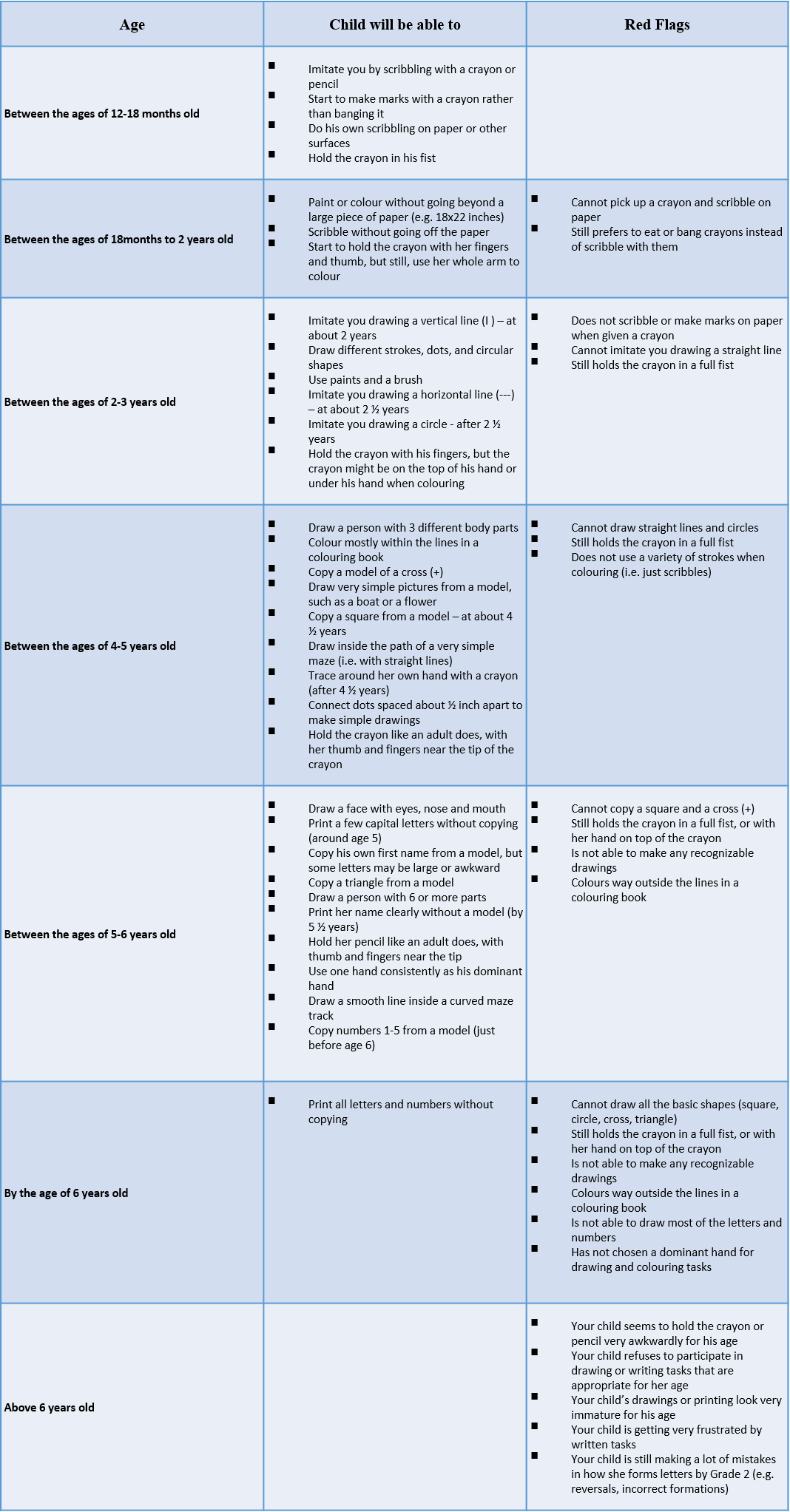Handwriting for Children

Why are handwriting skills important?
Children with poor handwriting may face problems when teachers mark their written work. They may also struggle to write creatively or even to write down answers correctly, as all their focus and effort is channeled into getting anything down on paper. When children struggle to write legibly, they are may often be seen as being lazy, and this may affect their behavior and self-esteem. In secondary school years, children who struggle with handwriting may have to endure even more as they struggle to keep up with the volume of written work required.
What affects handwriting skills?
Handwriting for children can be affected by many factors. These are some, but not all, of the factors. Some children struggle with just one area; others may have more than one factor impacting on their handwriting abilities.
These enable the hands to correctly replicate what the eyes see. Visual perception and fine motor abilities are integrated, and enable the child to copy shapes, numbers, and letters. Children need to be able to copy basic shapes (diagonal lines, circles, squares, triangles and intersecting lines) before learning to form their letters correctly.
These enable children to understand what they see. A child with poor visual discrimination skills may not see that writing an “r” is different to writing an “n” or “h”. This may be reflected in a child’s handwriting, where those letters all look the same.
A child with poor visual closure skills may not realize that an “o” which is not closed properly looks like “u”, and this would affect their letter formations.
A child with poor visual-spatial skills may affect a child’s ability to lay work out well on the page and can make his handwriting looks messy. Letters may be irregularly sized, or the child may struggle to use the lines properly.
Handwriting is more affected by the child’s ability to manipulate or control the pencil. In-hand manipulation (dexterity) and finger skills have been shown to have the most impact on handwriting for children.
A poor sitting posture will also affect handwriting in children, as the smaller muscles of the hands are not freed up to work properly.
Directionality and problems with left-right discrimination can affect letter reversals and transcription (writing “saw” as “was”), as well as starting on the wrong side of the page, or writing in the wrong direction. Directionality develops from a good sense of personal spatial relationships, but starting on the wrong side of the paper can also be caused by midline crossing issues.
Getting good tactile (touch) feedback, as well as proprioceptive and kinesthetic feedback from the hands and joints, plays an important role in helping develop good handwriting for children.
Children who struggle with these skills may hold the pencil too tightly, or press too hard on the paper when writing. Sometimes they may scribble “uncontrollably” to give themselves proprioceptive feedback. They may also feel the need to keep their heads close to their work to watch while they write, trying to get as much visual feedback as possible to compensate for their poor sensory feedback.
This enables a child to remember what a word or letter looks like, and then to write it down as needed. Children with poor orthographic coding skills easily forget how a letter is formed and may thus form it differently each time they write it, even writing it different ways within the same writing task. They may even retrace parts of the letter trying to figure out where the next part goes. This can cause their handwriting to look untidy.
Children with poor orthographic coding may struggle to figure out where to start the letter, and may hesitate a lot while writing. They take a long time to put their thoughts on the page, as they are just trying to figure out where to start to form the letters or how to write the word. Orthographic coding delays may affect reading and spelling as well as handwriting skills.
This can affect handwriting as it involved figuring out how to hold the pencil and how to put it to paper, planning the layout of work on the page and carrying it out, establishing the motor memory of remembering how letters are formed and carrying over the memory from one task to the next.
A lesson in handwriting for children with poor motor planning skills is like a brand new lesson for them each time. They may really struggle to carry over what they have learned in previous lessons. Poor motor planning (dyspraxia) may thus affect all the other areas discussed here (such as fine motor skills, visual motor coordination, orthographic coding, etc).
Children with poor motor planning skills also struggle with other classroom tasks, such as figuring out how to use a ruler to draw a line, figuring out how to cut around a complex shape with scissors, etc.
Organization and problem-solving skills include motor planning and the spatial perceptual ability to lay work out well on the page. Children’s handwriting skills may be affected as a result of general disorganization and failure to understand and follow instructions.
Milestones and Red Flags

Book An Appointment Today






